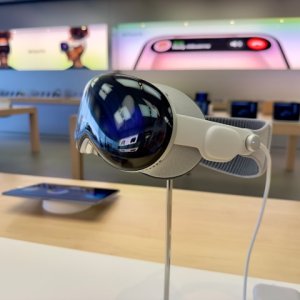
A Digital Future for Hospitals
 By Miriam Bello | Senior Journalist and Industry Analyst -
Wed, 05/20/2020 - 11:17
By Miriam Bello | Senior Journalist and Industry Analyst -
Wed, 05/20/2020 - 11:17
The future of hospitals is digital. Adopting technology brings many benefits and while the digitalization trend has been going on for about 10 years, Mexico has not been able to fully adopt it yet.
Digitalization of hospitals can sometimes be related to smart hospitals and hospital 4.0. As a result of the so-called fourth industrial revolution, technology and innovation have reached every sector of life and the healthcare industry is one of the strongest developers of new innovative solutions. This has led to the creation of smart infrastructure for healthcare, allowing all new technologies to coexist and connect to achieve complete digital practices.
According to a report made by Healthcare Global, new technologies that are transforming hospitals and healthcare practices are: AI, robotics, precision medicine 3D printing, augmented and virtual reality, genomics, telemedicine and electronic clinical records. Adopting these technologies could save up to 10 percent of the overall annual national healthcare expenditures for most OECD countries.
According to a study made by Deloitte, these are the five watershed changes that technology offers to healthcare:
- A redefined delivery of healthcare as digitalization offers centralized centers of control, including environment control, clinical monitoring and targeted treatment based on electronic health records (EHR), which enables medical staff to be in constant and even personalized contact with every patient. Companies like Aidicare, offer devices to track their patient’s status while at the hospital.
- Digital patient experience trough AI technologies that allow patients to receive better attention.
- Enhanced talent development as robotic process automation and AI reduce the time spent on documentation processes, allowing care providers to give longer patient consults.
- Efficiency on operational processes trough digital supply chains, automation, robotics and next-generation interoperability, which can improve operations management and offer control over delicate areas.
- More patient-centric and well-being-centered designs, focusing on the environment and the patient’s experience at the hospital.
This future is promising and as the COVID-19 pandemic has evidenced, technology and digital tools are now part of our way of life. Companies that do not adapt will be left behind. In ideal scenario, Deloitte’s expected benefits will become a reality, but there are still challenges to adopt technology. For example, one of the first requirements that comes with digitalizing hospital practices is EHR use. According to Microsoft, this offers legible and complete information, quick access for coordinating care, effective and safer diagnosis and care and reliable prescribing. While the benefits from EHR are significant and transforming, it has been found that clinicians end up spending 67 percent of their day on EHR filling processes and ends up spending just 33 percent of their time with patients. The following graph illustrates the specific parts of the process where time is spent.
In Mexico, hospitals like Médica Sur have been able to digitalize their practices and integrate technology into their services. But there are still barriers on adopting technology in all hospitals in the country, especially in the public sector. In the current scenario, the pressure on the healthcare community is on and smart hospital innovation can be critical support for players to overcome the crisis.
















